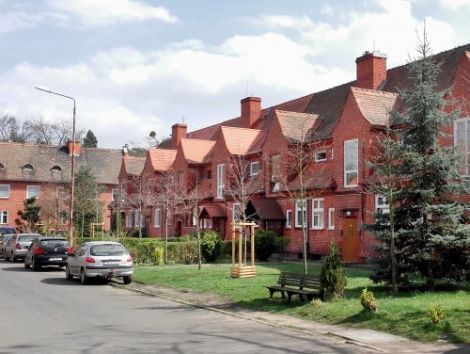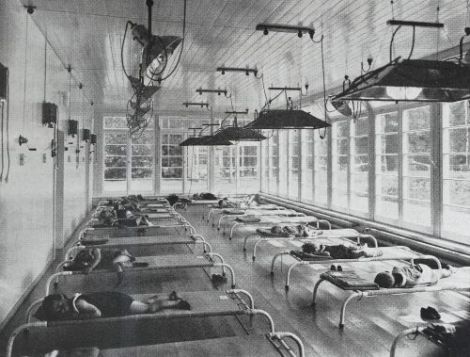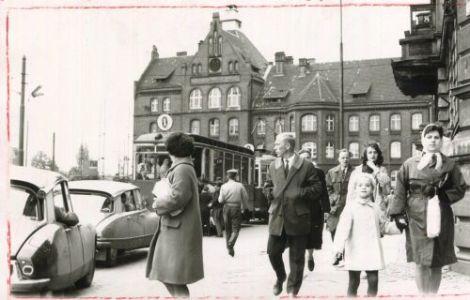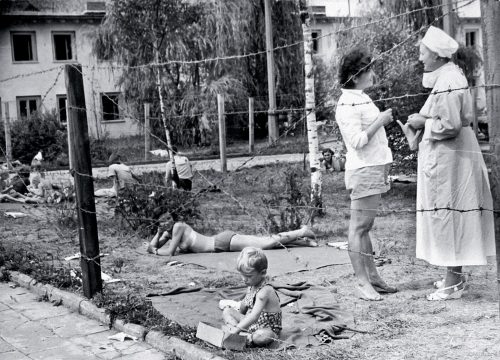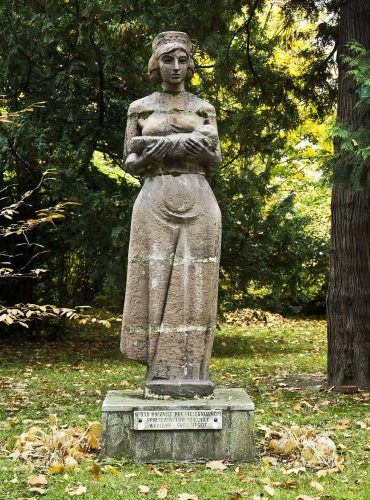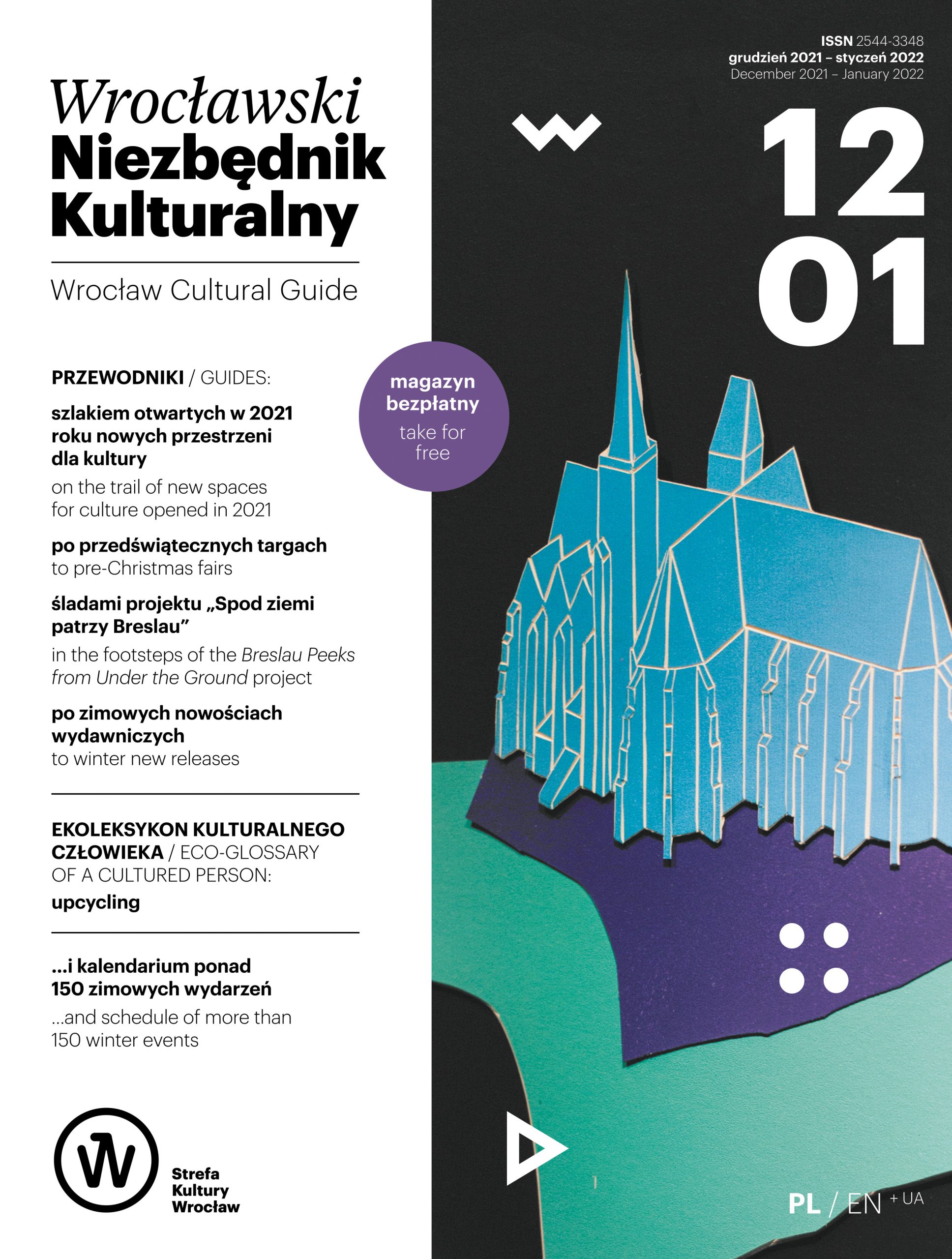Article also available in PDF
4 minutes read
Housing estate for consumptives
Housing estate for tuberculosis, photo: Anna Bieliz
In the 1920s, all of Europe was still afraid of tuberculosis, and new regulations introduced in Germany and other countries called for isolation of all patients suffering from this disease. In 1928, a decision was made to build a housing estate for the sick in Pracze Odrzańskie, at a safe distance from the city. In total, 32 two-storey terraced houses were erected, with the three-bedroom ground floor for the family, and the top floor for the patient, who had their own walk-in closet, a toilet, a large bedroom and a balcony. Thanks to unique solutions, such as the north-south facing directions, the patients were provided with maximum sunlight exposure, which at that time doctors believed to be important for the sick. What is more, two additional buildings were designed to accommodate the needs of patients without families, who had access to their personal offices facing west and glazed porches with great access to sunlight.
Model day care sanatorium for children
Model day care sanatorium for children, photo: Heinrich Klette, from the archives of the University Library in Heidelberg
Pulmonary diseases were also what gave rise to another building along our route. On the outskirts of Szczytnicki Park, a model day care sanatorium for children was built as part of the Homestead and Workplace [Ger. Die Wohnungs- und Werkraumausstellung] exhibition, also known as WuWA. The modernist and well-lit building designed by Richard Konwiarz was supposed to help young patients suffering from or just at risk of respiratory diseases. Their stay was supervised by qualified staff, and the children – in addition to learning and playing like in a normal kindergarten – were treated, mainly with quartz lamps. Outside, they could use a swimming pool, a summer puppet theatre and a square with gymnastics equipment. The designer wanted the sanatorium to become a model solution for childcare, which was supposed to be used across all Germany. Shortly after the war, the pavilion was largely rebuilt, and during the 1948 Exhibition of the Recovered Territories it served as a children’s shelter, where visitors could leave their children for 50 PLN to watch the exhibition.
The Ministry of Interior and Administration Hospital
The Ministry of Interior and Administration Hospital, photo from the collection of Wratislaviae Amici polska-org.pl
The building housing the hospital was built in 1852 to replace a former orphanage, it was designed by Richard Plüddeemann and Karl Klimm – a duo that worked on the Zwierzyniecki Bridge, the University Library building on Szajnochy Street and the water tower on Wiśniowa Street, among many others. It became famous exactly 111 years ago – at the time it was known as the Regional Public Safety Office Hospital in Wrocław. On 2 June 1963, a Security Office officer returning from India was admitted, diagnosed with malaria and transferred for further treatment. What the doctors didn’t know at the time was that he had also left the smallpox virus there, which was a prelude to two months of intense fighting against the deadly disease, leading to Wrocław being cut off from the rest of the country and compulsory vaccination of more than 8 million people. A total of 99 smallpox patients were recorded (including 90 in Wrocław alone), and the epidemic led to the deaths of 7 people.
Smallpox hospital in Szczodre + quarantine facility in Psie Pole district
Quarantine facility in Psie Pole district photo: Mieczysław Dołęga, from the archives of “Gazeta Wrocławska”
The fight against the smallpox epidemic in the summer of 1963 comprised mainly isolating the sick and those who came into contact with them. The press regularly published a list of infected people and called for all those who came into contact with them to come to report to the sanitary and epidemiological authorities. Those who came were placed in a hospital in Szczodre near Wrocław. The building, which used to house the Swedish consulate before World War II, as well as the town itself, later served as a set for Roman Załuski’s 1971 film The Plague, which portrayed the history of the epidemic.
In total, 18 quarantine facilities were also established, with the largest one, housing 800 patients, being located in the buildings of the Engine Building School in Psie Pole. The barracks fenced with barbed wire were subject to strict regulations, and the patients who lived there complained mainly about the quality of meals, the lack of alcohol, cigarettes or a jukebox.
The history of the Variola vera virus has a happy end – mass vaccinations made the World Health Organization establish a 1,000 USD prize for detecting at least a single case in 1978. Since 1980, smallpox remains the only human disease recognised by the WHO as being completely eradicated.
Faculty of Health Sciences of the Medical University and the monument to the nurse
Nurse’s monument, photo from the fotopolska.eu collection
The walls of this picturesque building in Szczytniki housed many institutions. At the outset of the 20th century, it was the Hospital of the Sovereign Military Order of Malta, later renamed the Charitasheim Sanatorium, run by German nuns. Then, it was turned into a medical high school, which trained nurses and midwives in Wrocław. Currently, the building hosts the Faculty of Health Sciences of the Medical University. While visiting this place, take a moment to find a statue standing in the courtyard, depicting a nurse with a baby in her arms. One of the few such monuments in Europe was erected in 1974 at the initiative of the Polish Nursing Society. Until recently, there was a plate with a dedication: “On the XXX anniversary of the Polish People’s Republic to nurses – the society of the Wrocław Śródmieście district.”
Collected by: Aleksandra Błędowska

